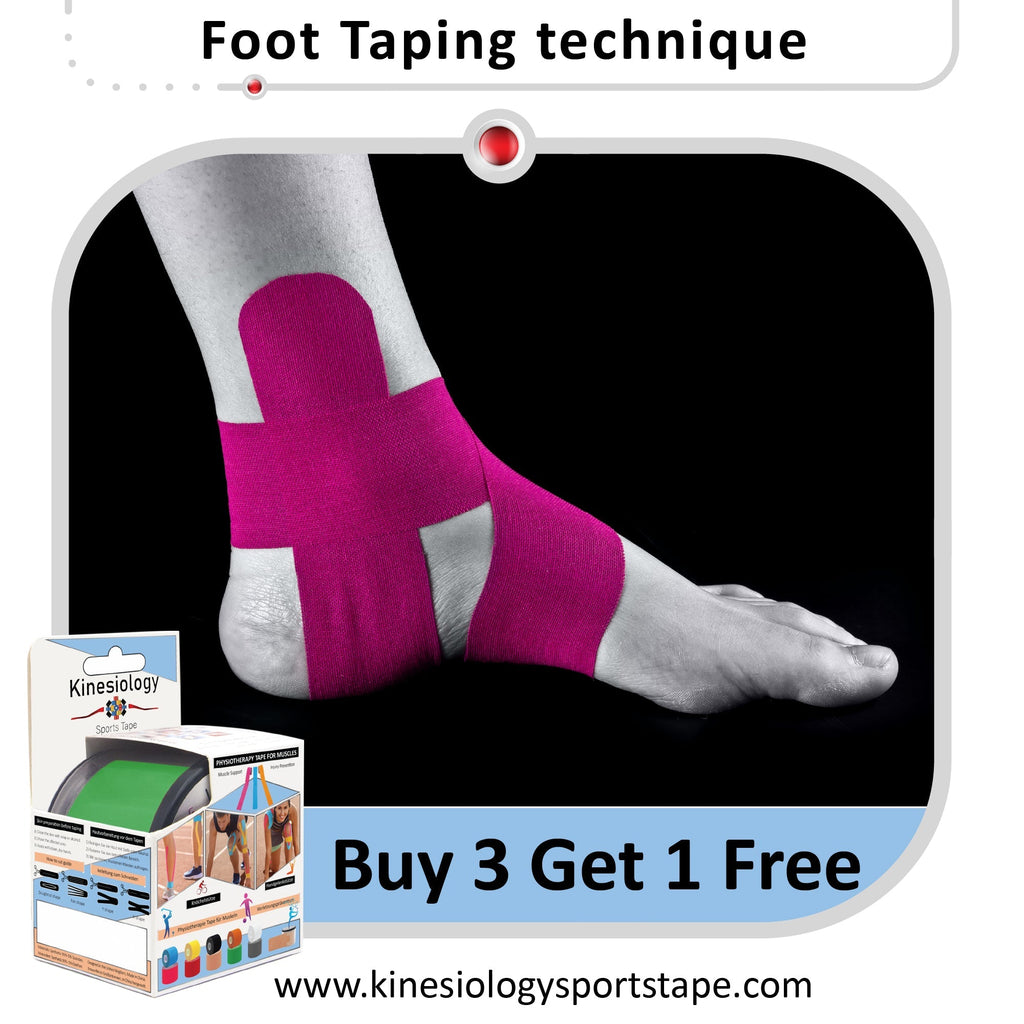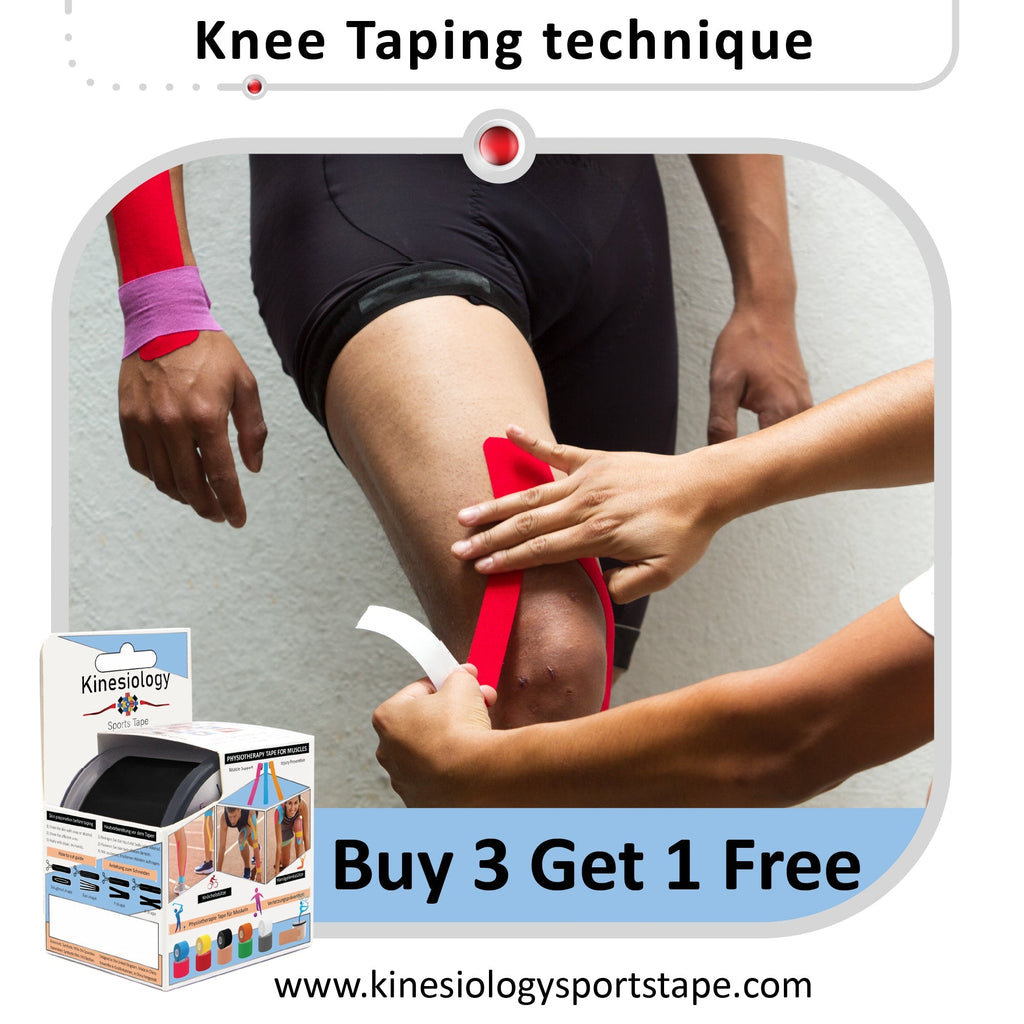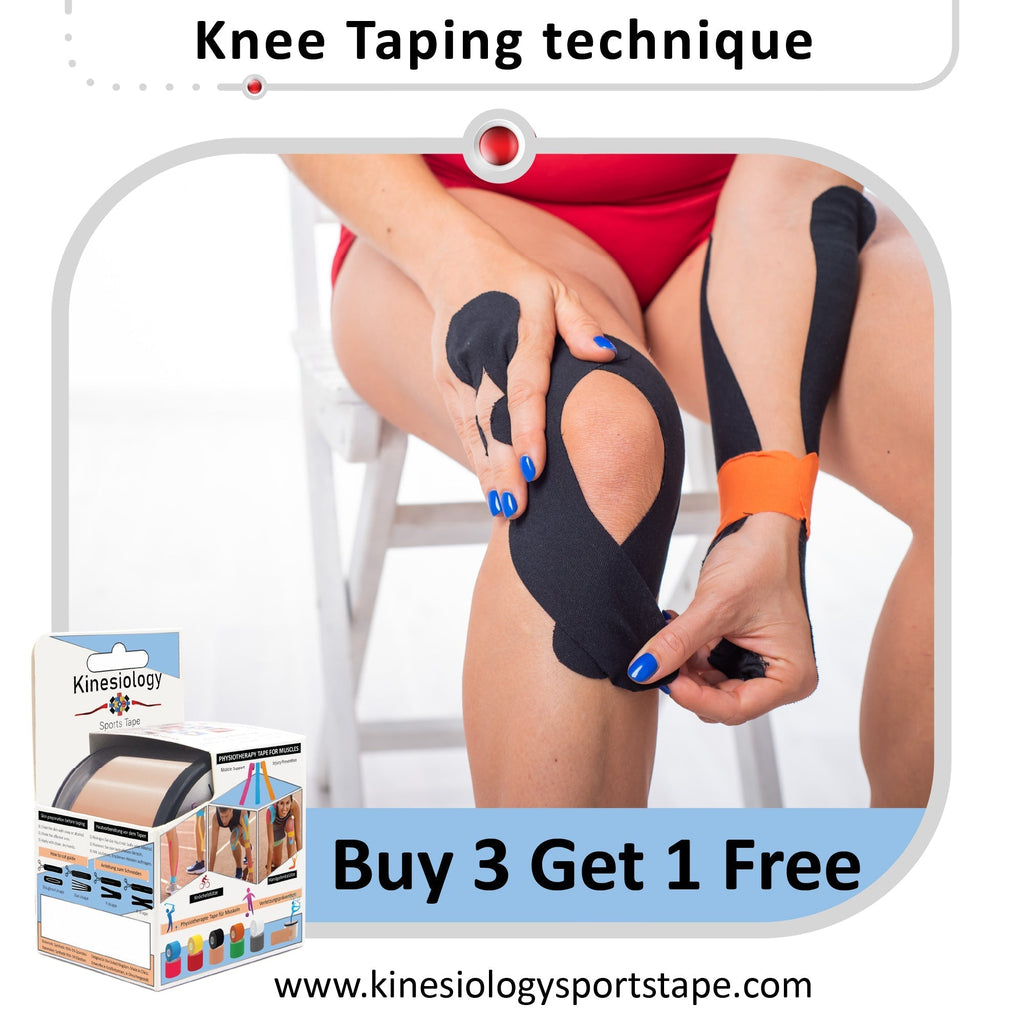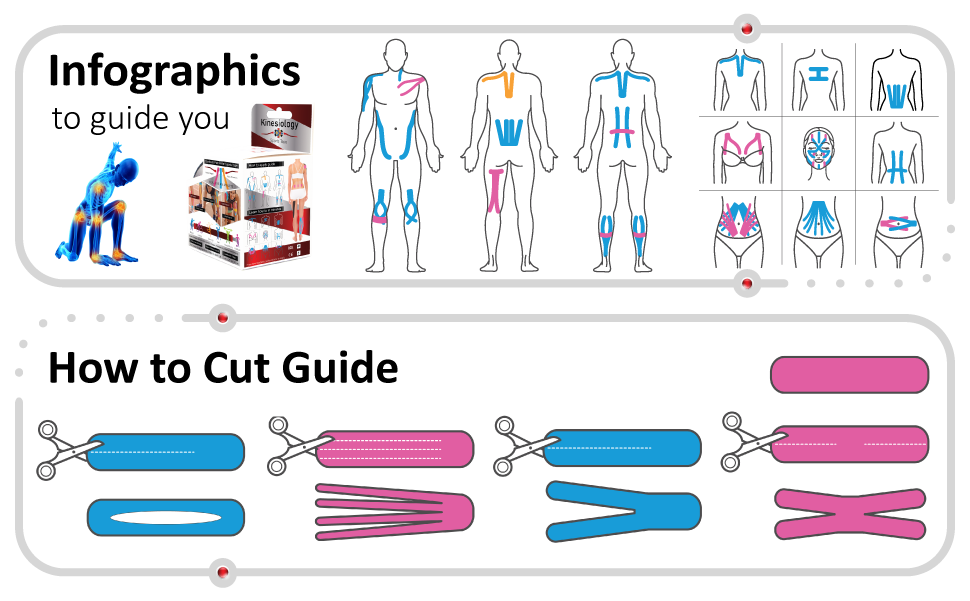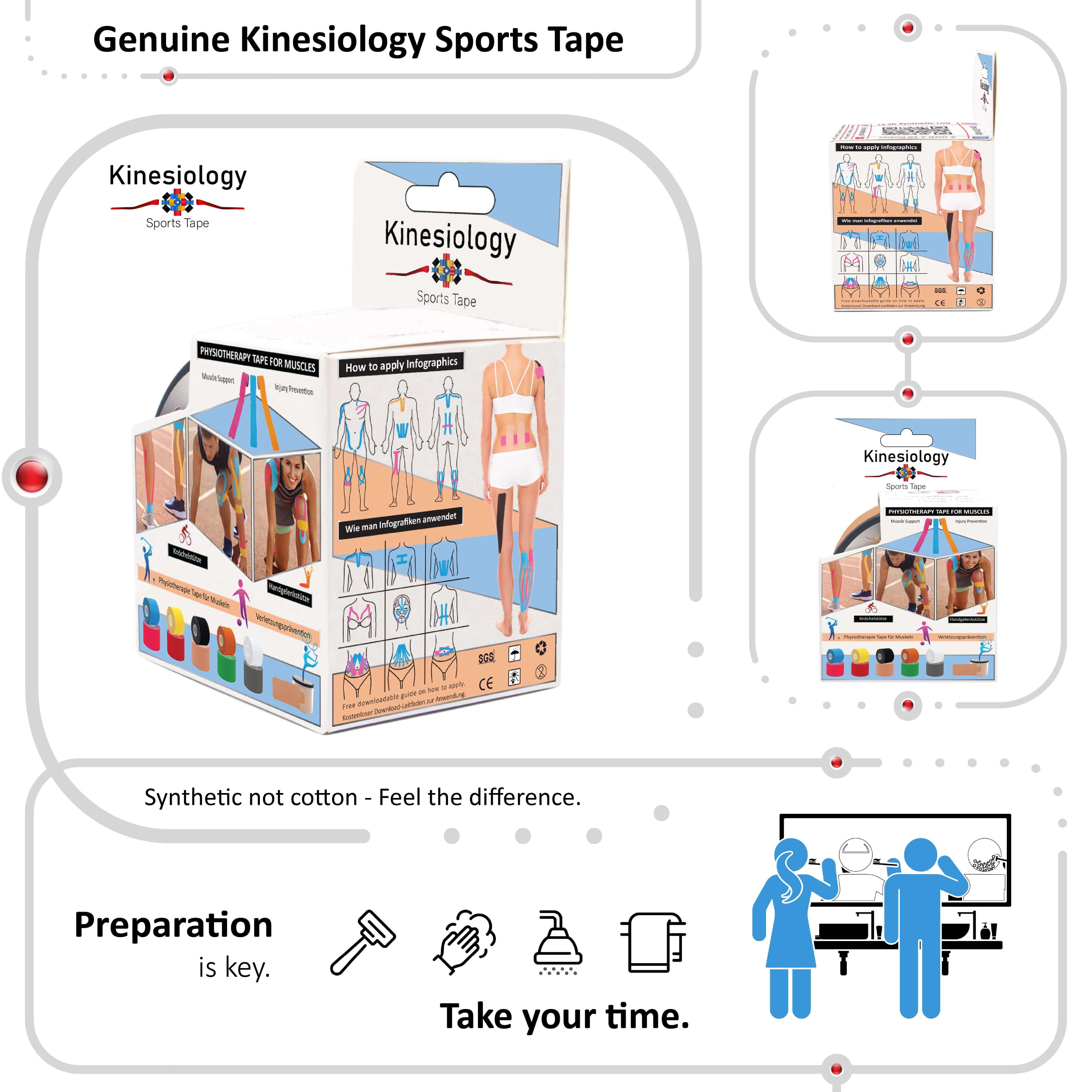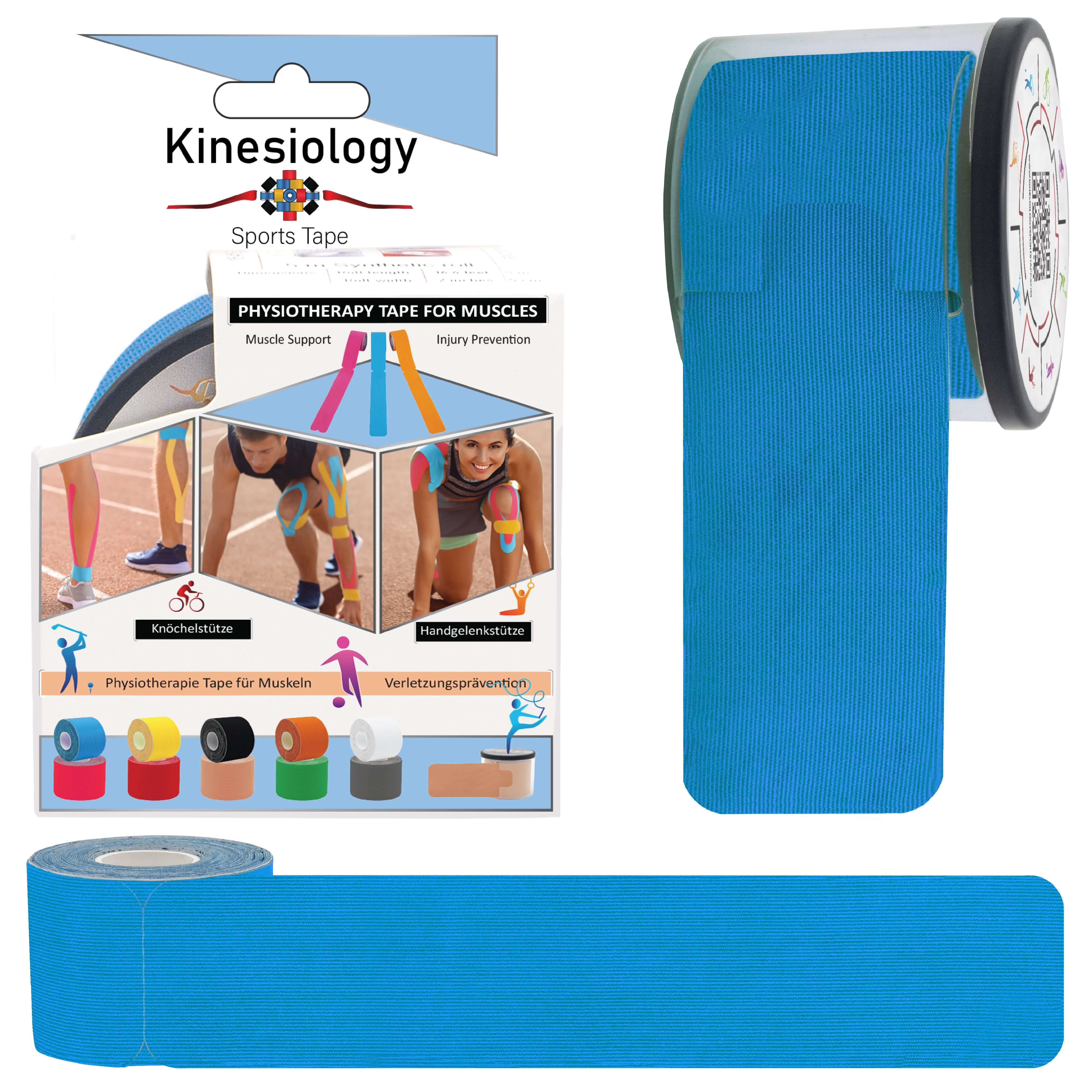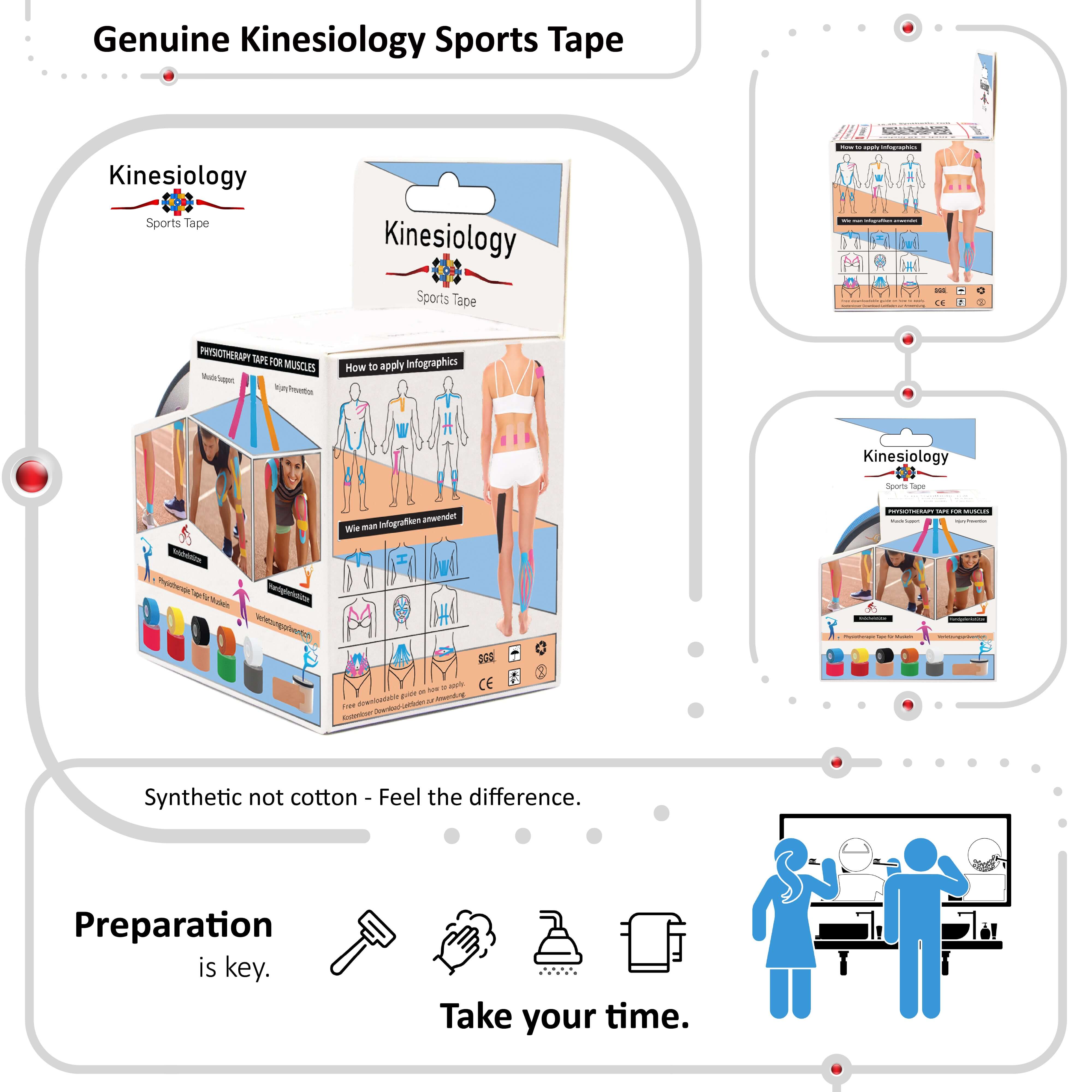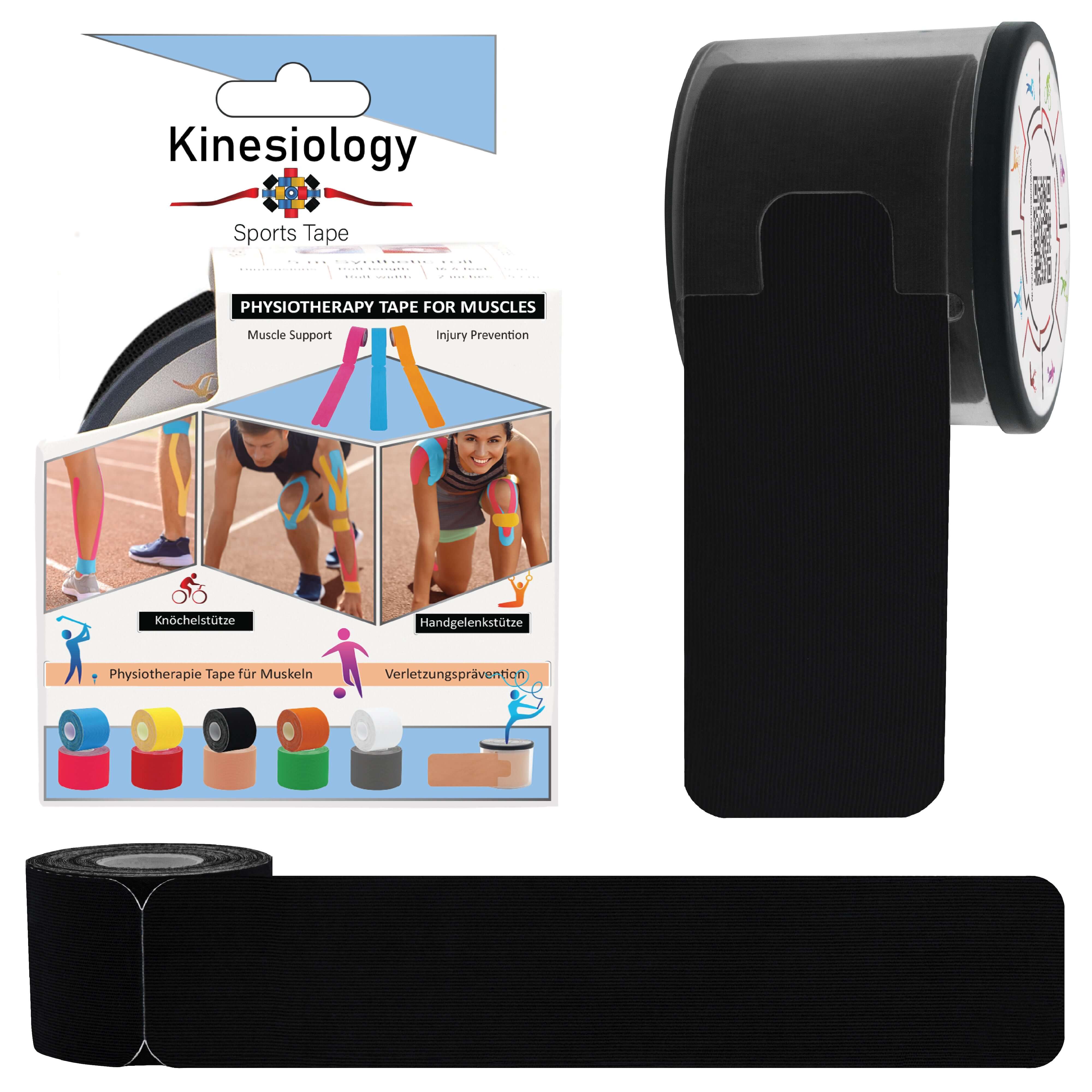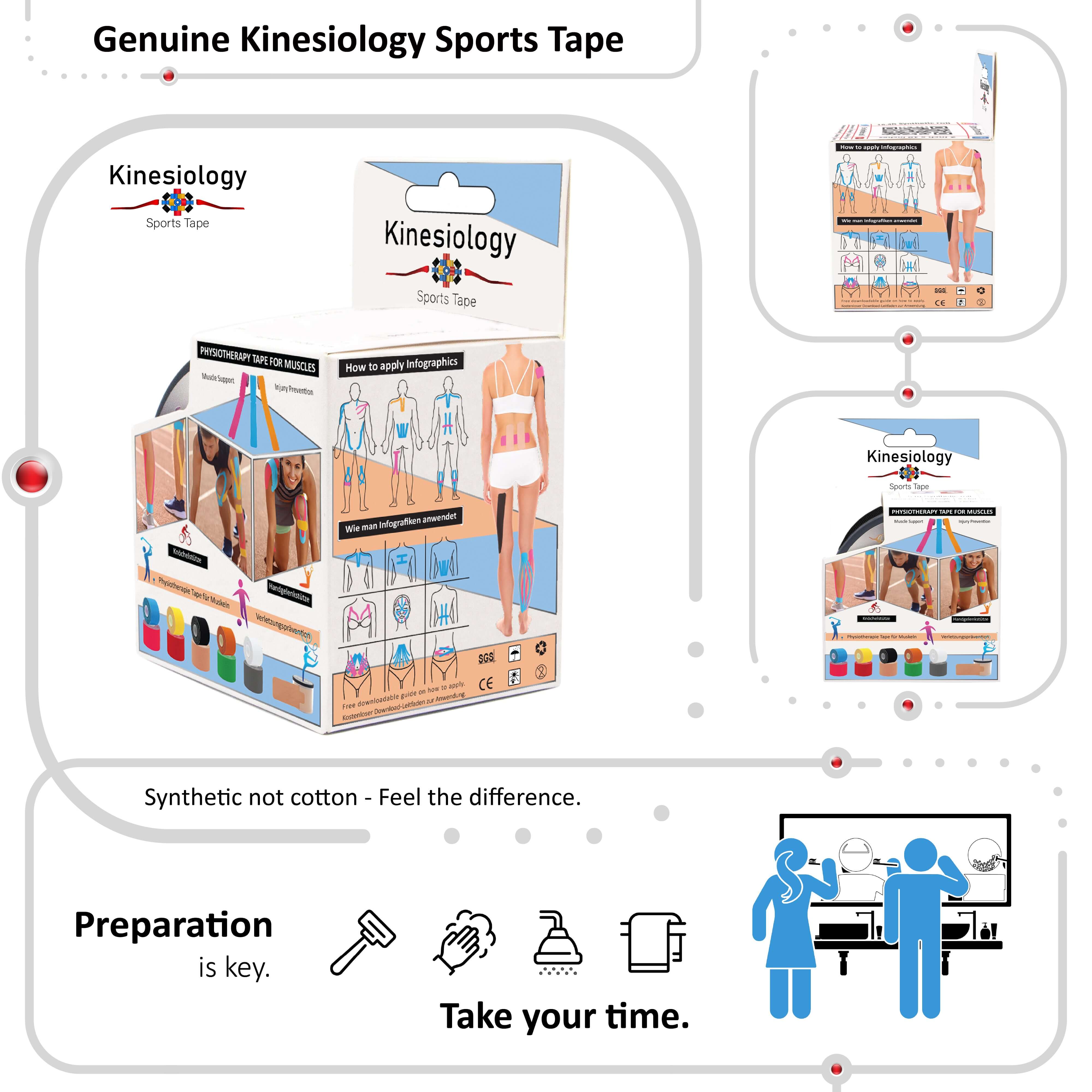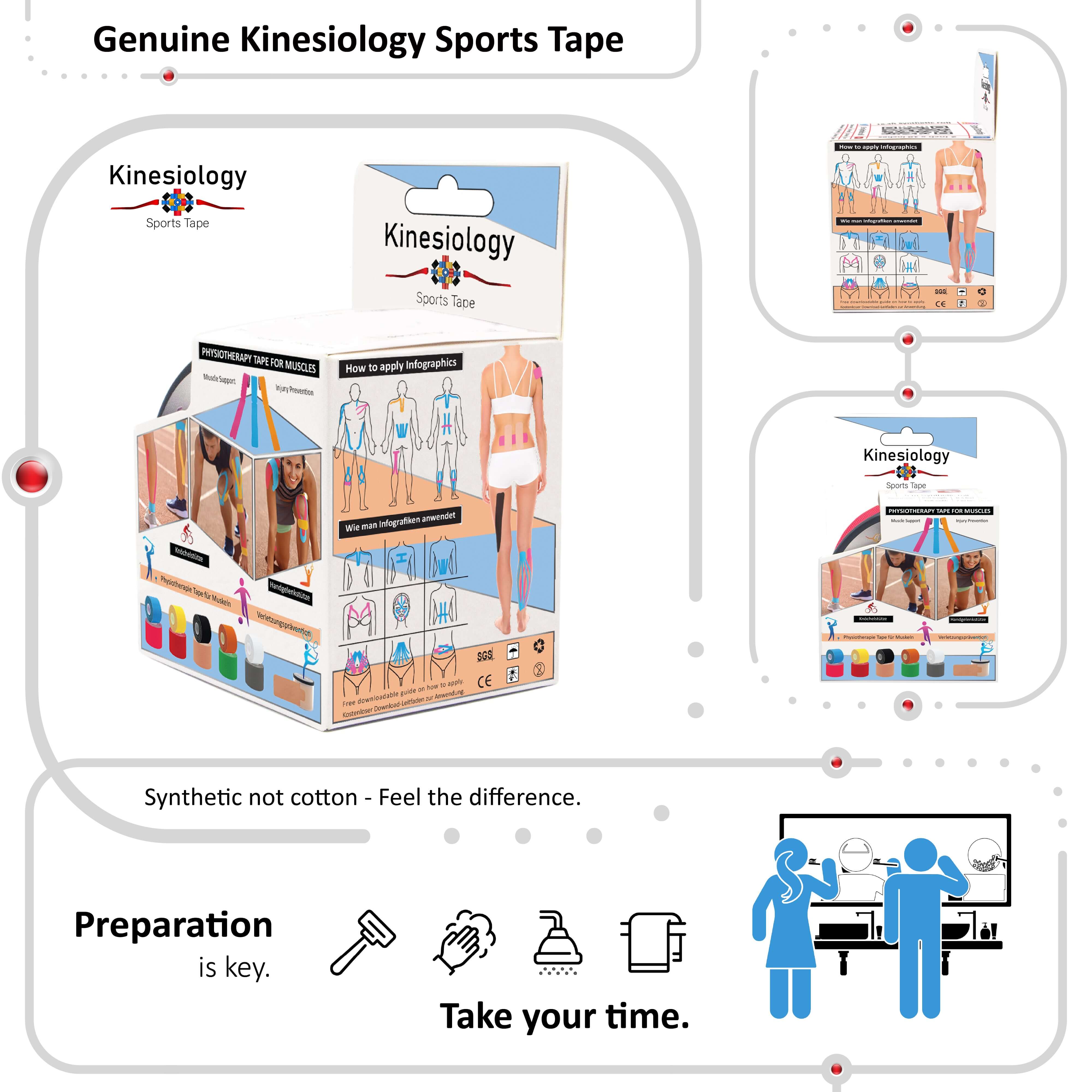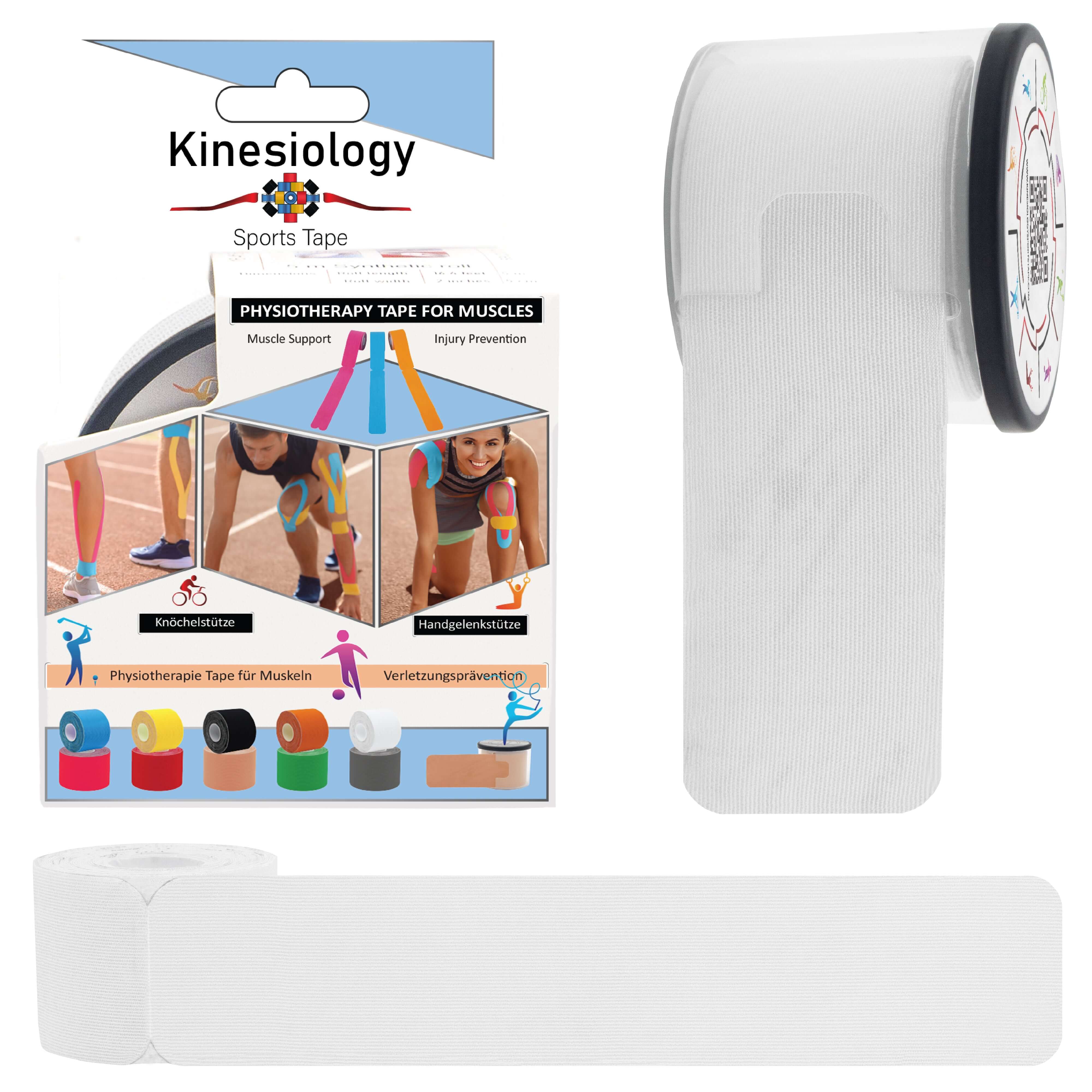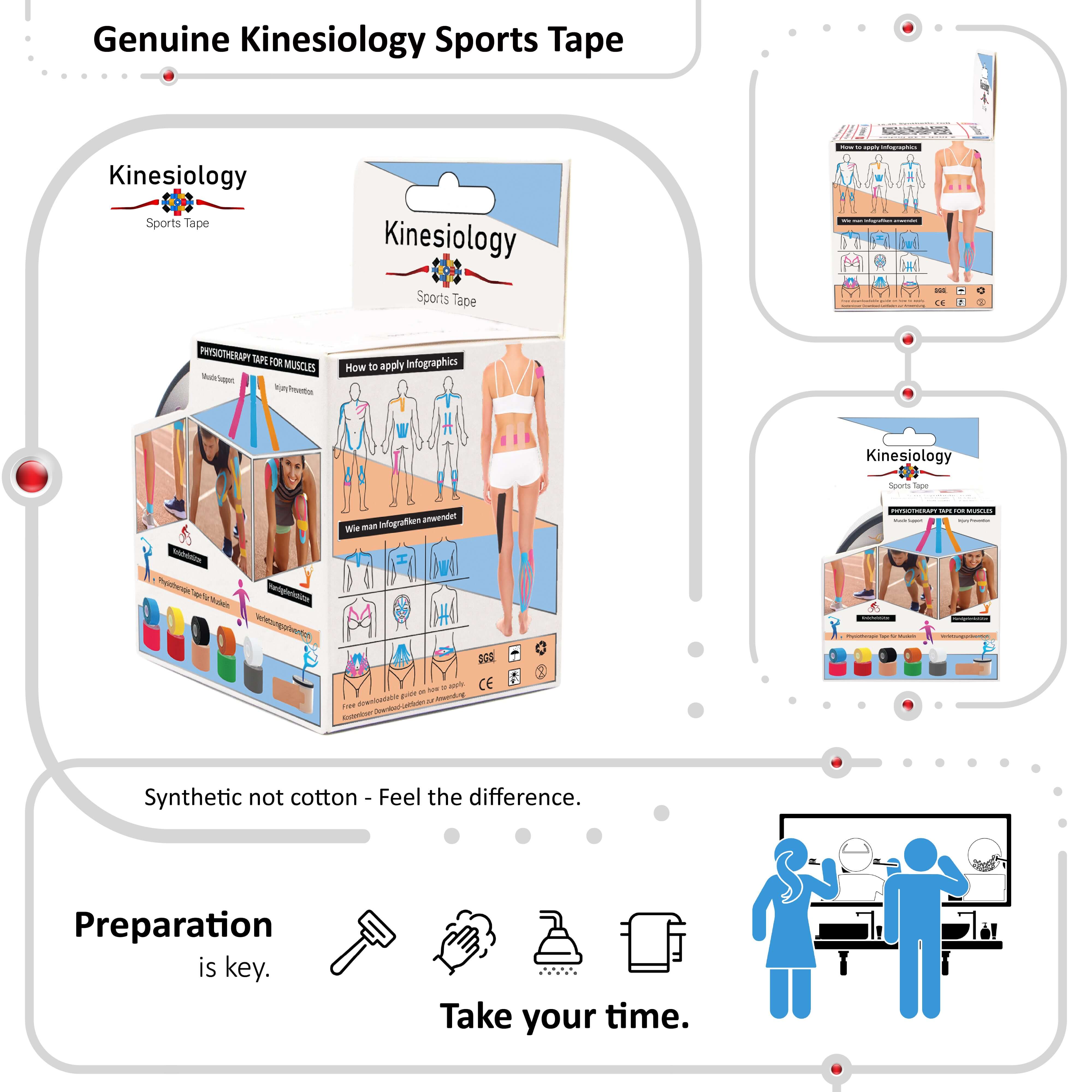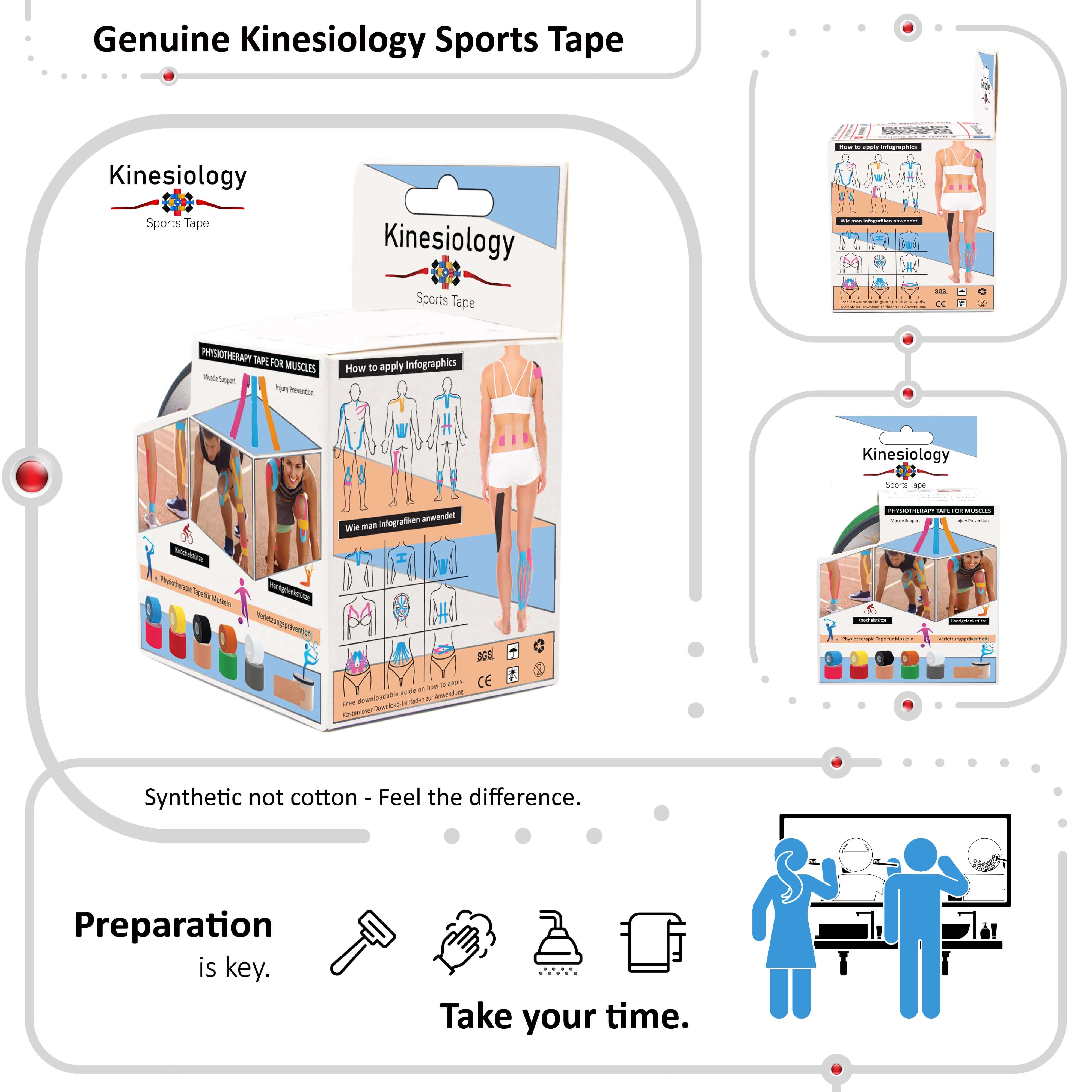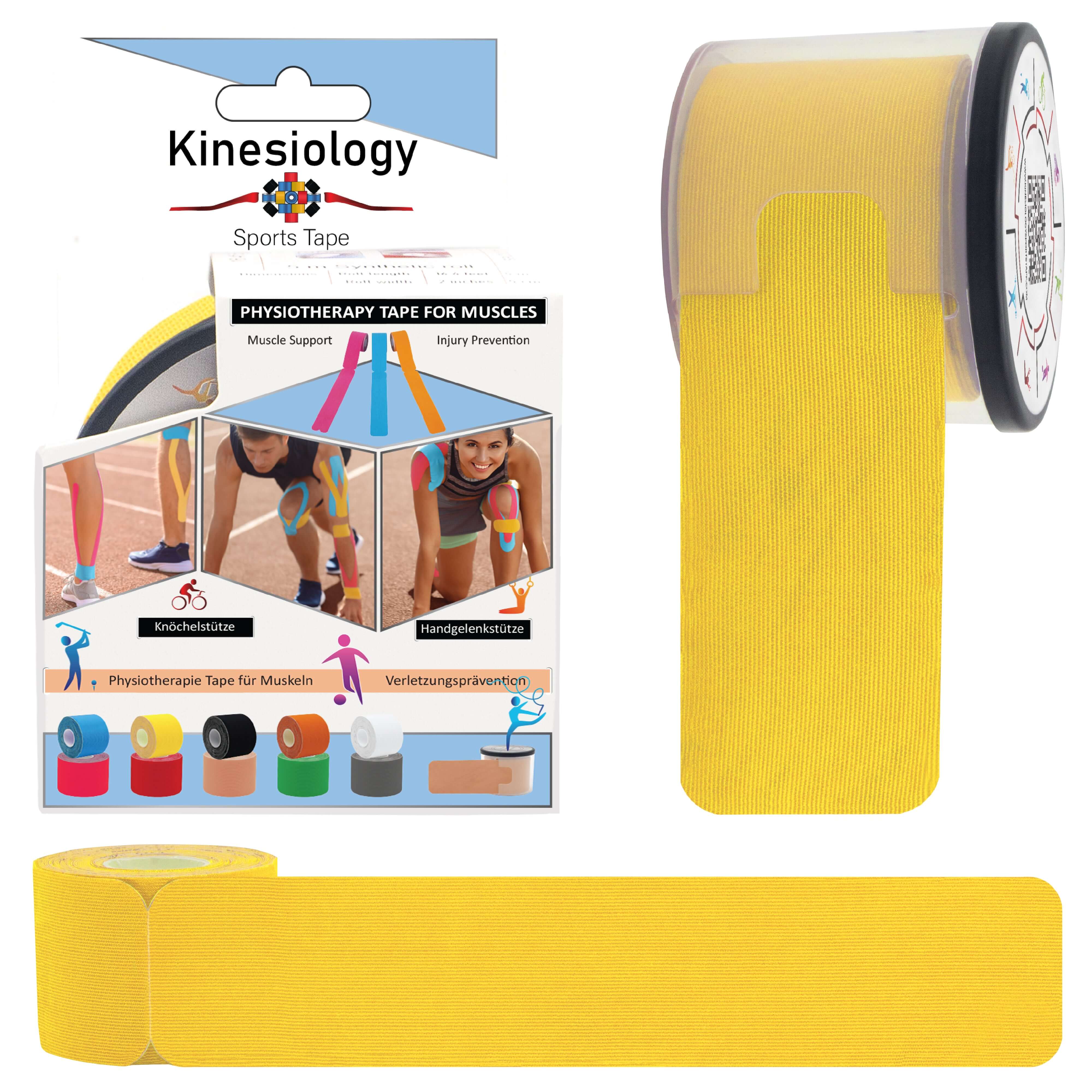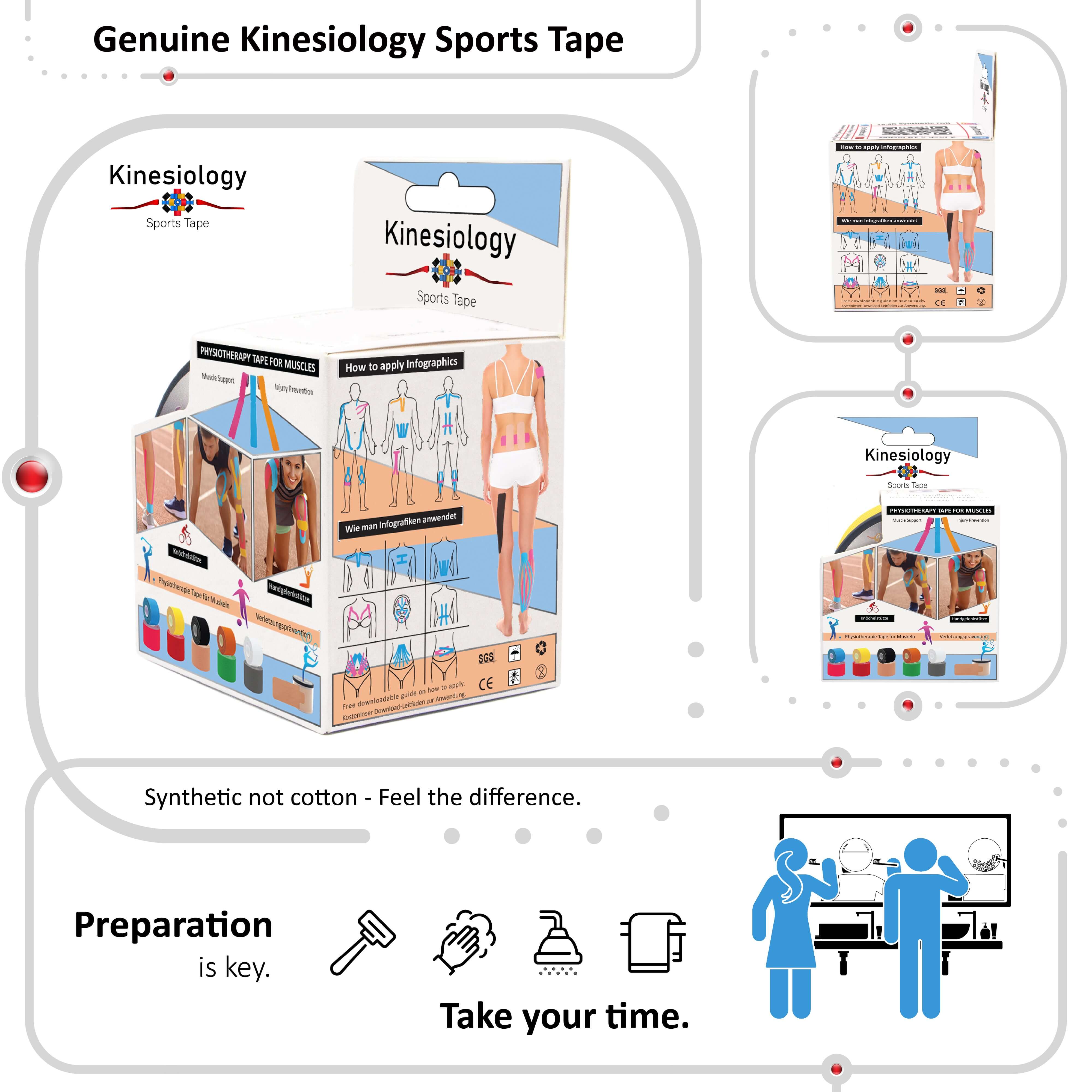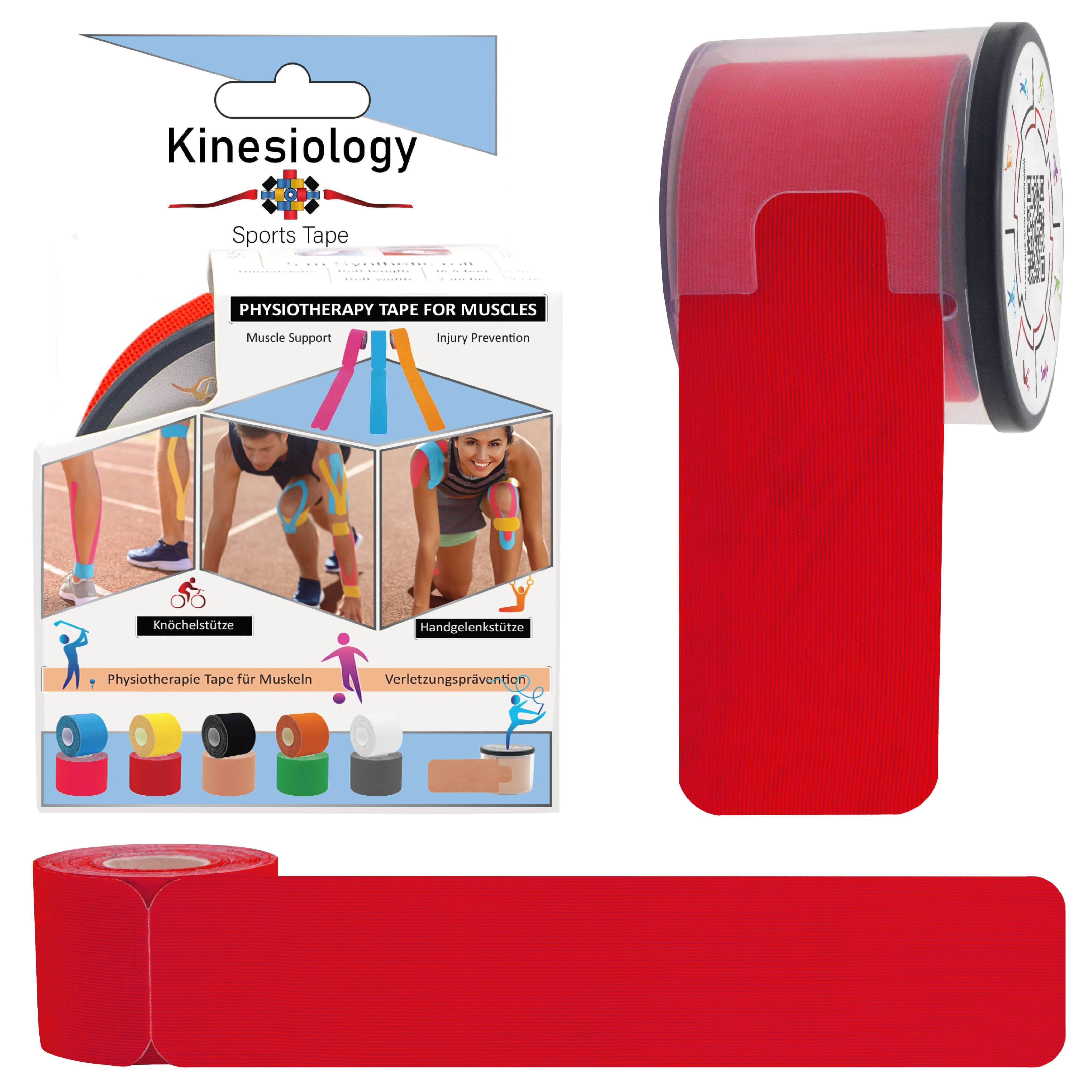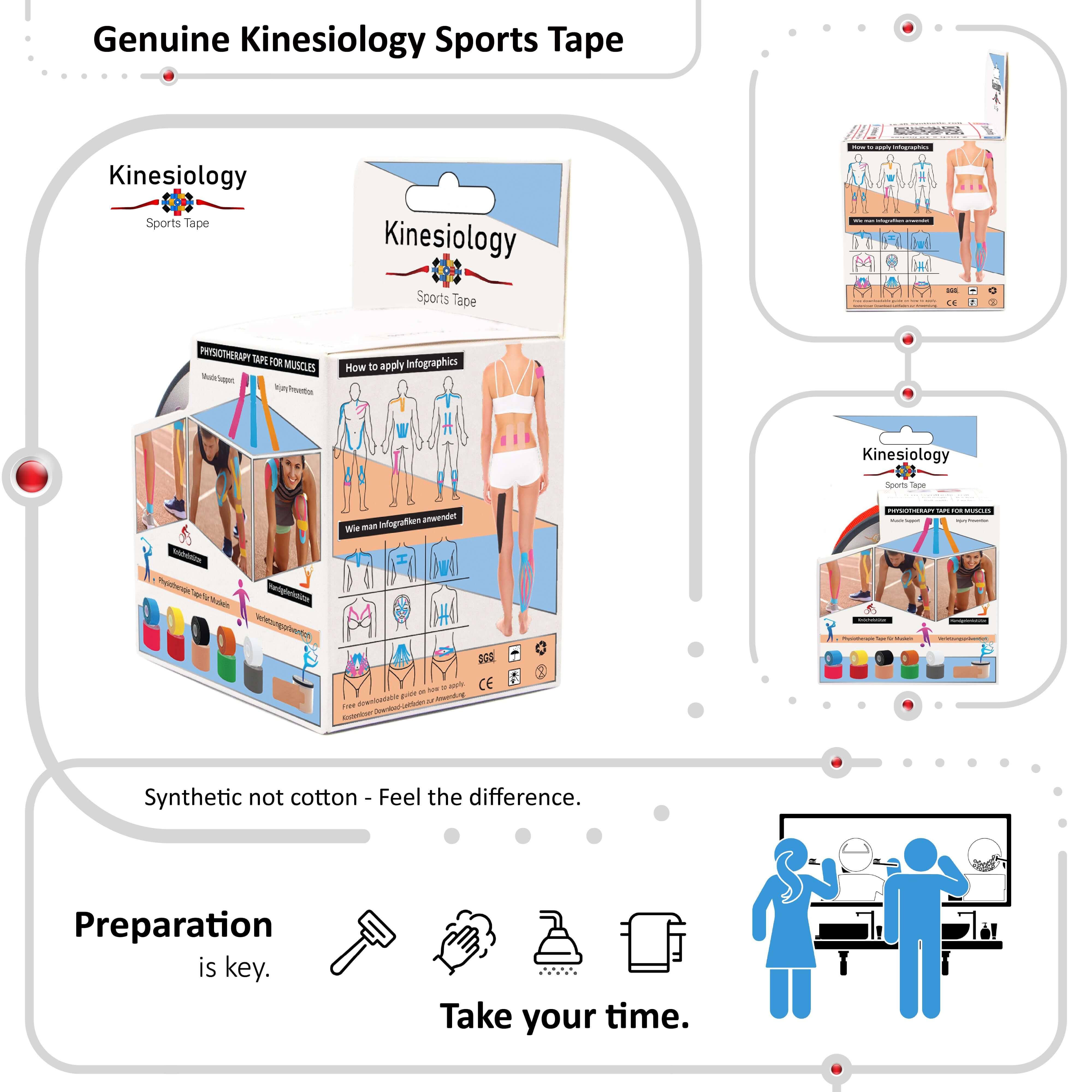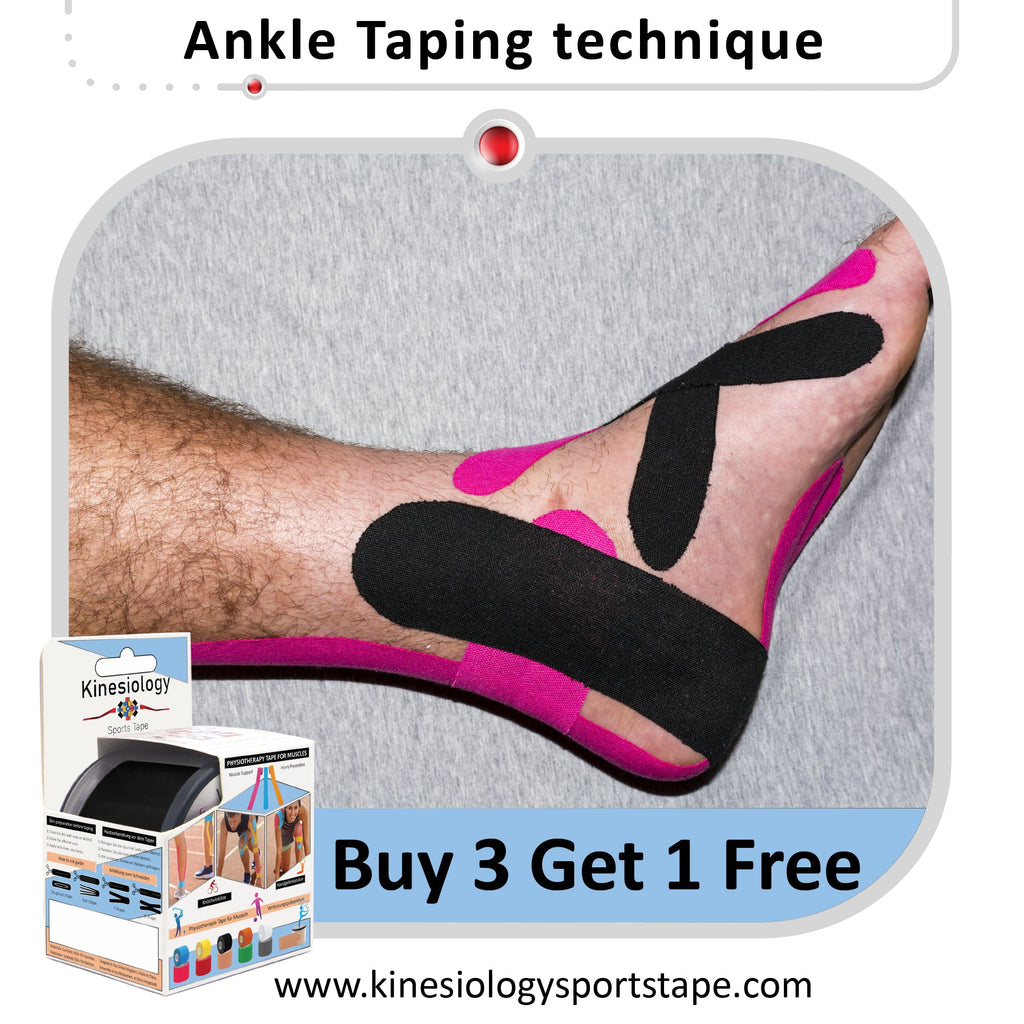
Kinesiology Tape for Ankle Sprains and Stability: Complete Recovery and Prevention Guide

Ankle sprains represent one of the most common musculoskeletal injuries, accounting for approximately 25% of all sports-related injuries and affecting millions of people annually [1]. The ankle joint's complex anatomy and the significant forces it experiences during daily activities make it particularly susceptible to injury, especially during sports and recreational activities that involve cutting, jumping, and rapid directional changes. Traditional treatment approaches for ankle sprains often involve immobilization, rest, and gradual return to activity, but kinesiology tape offers a revolutionary alternative that supports healing while maintaining mobility and function.
The ankle joint complex consists of multiple articulations that work together to provide both stability and mobility during weight-bearing activities [2]. When these structures are injured, the resulting pain, swelling, and instability can significantly impact daily activities and athletic performance. Kinesiology tape's unique properties make it ideally suited for ankle applications, as it can provide dynamic support while allowing the natural movement patterns essential for proper ankle function and healing.
Research has consistently demonstrated the effectiveness of kinesiology tape for ankle sprain treatment and prevention, with studies showing significant improvements in pain levels, functional capacity, and proprioceptive awareness [3]. The tape's ability to enhance stability without restricting range of motion makes it particularly valuable for individuals who need to maintain their activity levels while recovering from ankle injuries or preventing future sprains.
The high recurrence rate of ankle sprains, with studies showing that up to 80% of individuals who suffer an initial ankle sprain will experience subsequent injuries, highlights the importance of effective treatment and prevention strategies [4]. Kinesiology tape can play a crucial role in both acute injury management and long-term prevention by addressing the underlying factors that contribute to ankle instability and re-injury risk.
This comprehensive guide explores the science behind kinesiology tape's effectiveness for ankle sprains, provides detailed application techniques for various ankle conditions, and offers evidence-based strategies for maximizing recovery and preventing future injuries. Whether you're dealing with an acute ankle sprain, chronic instability, or looking to prevent future injuries, understanding how to properly apply and utilize kinesiology tape can be a valuable component of your ankle health strategy.
Understanding Ankle Anatomy and Sprain Mechanisms
The ankle joint complex is a sophisticated system of bones, ligaments, muscles, and other soft tissues that work together to provide stability during weight-bearing activities while allowing the mobility necessary for walking, running, and jumping [5]. Understanding this complex anatomy is crucial for effective kinesiology tape application and ankle injury management.
The ankle consists of three primary joints: the talocrural joint (true ankle joint), the subtalar joint, and the midtarsal joints. The talocrural joint is formed by the articulation between the talus bone and the tibia and fibula, providing primarily dorsiflexion and plantarflexion movements [6]. The subtalar joint allows for inversion and eversion movements, while the midtarsal joints contribute to the foot's ability to adapt to uneven surfaces.
The lateral ankle ligaments are the most commonly injured structures in ankle sprains. The anterior talofibular ligament (ATFL) is typically the first to be injured, followed by the calcaneofibular ligament (CFL) in more severe sprains [7]. The posterior talofibular ligament (PTFL) is rarely injured except in severe ankle dislocations. These ligaments work together to provide lateral stability and prevent excessive inversion of the ankle.
The medial ankle is stabilized by the deltoid ligament complex, which is much stronger than the lateral ligaments and is less commonly injured [8]. When deltoid ligament injuries do occur, they are often associated with more severe ankle injuries and may require different treatment approaches than lateral ankle sprains.
The muscles surrounding the ankle play crucial roles in both dynamic stability and movement control. The peroneal muscles on the lateral side of the leg provide eversion strength and help prevent inversion injuries [9]. The posterior tibialis muscle on the medial side provides inversion strength and arch support. The anterior muscles provide dorsiflexion, while the posterior muscles provide plantarflexion and contribute to push-off power during walking and running.
Ankle sprains typically occur when the foot is forced into an extreme position that exceeds the normal range of motion, most commonly inversion with plantarflexion [10]. This mechanism stretches or tears the lateral ankle ligaments, resulting in pain, swelling, and instability. The severity of ankle sprains is typically classified into three grades based on the extent of ligament damage and functional impairment.
The Science Behind Kinesiology Tape's Effectiveness for Ankle Injuries
The therapeutic effects of kinesiology tape on ankle sprains and instability operate through multiple mechanisms that work synergistically to reduce pain, improve function, and promote healing [11]. Understanding these scientific principles helps explain why kinesiology tape can be so effective for ankle conditions and guides optimal application techniques.
Proprioceptive enhancement represents one of the most significant benefits of kinesiology tape for ankle injuries. Proprioception, or the body's ability to sense joint position and movement, is often impaired following ankle sprains [12]. This proprioceptive deficit contributes to the high recurrence rate of ankle sprains and the development of chronic ankle instability. Kinesiology tape provides continuous sensory input to the skin and underlying tissues, helping to restore proprioceptive awareness and improve neuromuscular control.
The mechanical support provided by kinesiology tape differs from traditional rigid taping by offering dynamic support that adapts to movement while providing stability [13]. This support can help reduce stress on healing ligaments while allowing the natural movement patterns necessary for proper ankle function. The tape's elastic properties allow it to provide consistent support throughout the ankle's range of motion.
Circulatory benefits play an important role in ankle sprain recovery. The lifting effect created by kinesiology tape increases the space between skin and underlying tissues, promoting better circulation and lymphatic drainage [14]. This improved circulation helps reduce swelling, accelerate the removal of inflammatory mediators, and enhance the delivery of nutrients and oxygen to healing tissues. For ankle sprains, which often involve significant swelling, these circulatory benefits can be particularly valuable.
Pain modulation through the gate control mechanism provides immediate relief for many individuals with ankle injuries. The sensory input from kinesiology tape can inhibit pain signals at the spinal cord level, reducing the perception of pain without interfering with important protective sensations [15]. This pain relief can help individuals maintain mobility and begin rehabilitation exercises sooner than might otherwise be possible.
Muscle facilitation effects are particularly relevant for ankle injuries where muscle weakness or inhibition is common. Following ankle sprains, the peroneal muscles often become weak or inhibited, contributing to ongoing instability [16]. Kinesiology tape can be applied to facilitate these muscles while potentially reducing overactivity in compensatory muscles, helping to restore more normal muscle function and movement patterns.
Comprehensive Assessment for Ankle Taping Applications
Before applying kinesiology tape for ankle conditions, a thorough assessment is essential to identify the specific structures involved and determine the most appropriate taping strategy [17]. This assessment should include evaluation of pain patterns, range of motion, stability, and functional limitations.
Pain assessment should begin with a detailed history of the ankle injury, including the mechanism of injury, onset of symptoms, and any previous ankle injuries [18]. Understanding the specific activities that aggravate or relieve the pain provides valuable insights into which structures are involved and how they should be supported. The location and characteristics of pain can help differentiate between different types of ankle injuries.
Range of motion assessment is crucial for ankle conditions, as limitations in mobility can significantly impact function and may indicate specific structures that need attention [19]. Active and passive range of motion should be assessed in all planes of movement, including dorsiflexion, plantarflexion, inversion, and eversion. Comparing the injured ankle to the uninjured side helps identify specific limitations and asymmetries.
Stability testing helps determine the extent of ligament damage and the degree of instability present. The anterior drawer test assesses the integrity of the ATFL, while the talar tilt test evaluates the CFL [20]. These tests should be performed carefully and compared to the uninjured side to determine the degree of instability and guide treatment decisions.
Functional assessment should include activities that are important to the individual, such as walking, stair climbing, or sport-specific movements. Understanding how the ankle injury impacts daily activities and recreational pursuits helps establish treatment goals and guides the selection of appropriate taping strategies [21]. Single-leg balance tests can provide valuable information about proprioceptive deficits and functional stability.
Swelling assessment is important for acute ankle injuries, as significant swelling can interfere with normal joint mechanics and delay healing [22]. The location and extent of swelling should be documented, as this information helps guide tape application techniques and treatment priorities. Measurements of ankle circumference can provide objective tracking of swelling changes over time.
Based on the assessment findings, specific taping goals can be established. These might include pain reduction, stability enhancement, swelling reduction, or proprioceptive improvement [23]. Clear goals help guide tape selection, application technique, and evaluation of treatment effectiveness.
Essential Kinesiology Tape Application Techniques for Ankle Injuries
Mastering the fundamental application techniques for ankle taping is essential for achieving optimal therapeutic outcomes [24]. The ankle's complex anatomy and range of motion require specific approaches that address both stability and mobility needs.
Preparation for ankle taping begins with proper positioning and skin preparation. The individual should be positioned comfortably with the ankle accessible for taping, typically sitting or lying with the leg extended [25]. The ankle should be positioned in a neutral position or slight dorsiflexion to ensure appropriate tape tension during normal weight-bearing activities.
Skin preparation is particularly important for ankle applications due to the potential for moisture, friction, and the need for secure adhesion during weight-bearing activities [26]. The ankle and foot should be thoroughly cleaned and dried, with particular attention to removing any lotions or oils that could interfere with tape adhesion. For individuals with excessive hair, trimming may be necessary to ensure proper tape contact.
The basic ankle stability technique involves applying tape in patterns that support the lateral ankle ligaments while allowing normal ankle movement [27]. This typically includes strips that follow the path of the ATFL and CFL, providing support during inversion movements while maintaining dorsiflexion and plantarflexion range of motion.
Anchor placement is critical for ankle applications due to the significant forces that the ankle experiences during weight-bearing activities [28]. Anchors should be positioned on stable areas that don't experience excessive stretching during ankle movement. Common anchor locations include the lower leg above the ankle joint and the midfoot below the ankle joint.
The stirrup technique provides excellent lateral ankle support and is particularly effective for preventing inversion injuries [29]. This application involves placing tape from the medial side of the lower leg, under the heel, and up to the lateral side of the lower leg, creating a stirrup-like support that resists inversion movements while allowing other ankle motions.
Tension application for ankle taping typically ranges from 25-50% of the tape's maximum stretch, depending on the specific goals and the individual's tolerance [30]. Higher tensions may be appropriate for providing mechanical support during activities, while lower tensions may be better for pain relief and proprioceptive enhancement. The key is to apply enough tension to achieve the desired therapeutic effect without restricting normal ankle function.
Specific Protocols for Different Ankle Conditions
Different ankle conditions require specific taping approaches to address their unique characteristics and treatment needs [31]. Understanding these condition-specific protocols ensures that kinesiology tape is applied most effectively for each individual's situation.
Acute ankle sprains require gentle taping approaches that focus on pain relief, swelling reduction, and protection of healing tissues [32]. These applications typically use lower tensions and may incorporate lymphatic drainage techniques to help reduce swelling and promote healing. The primary goals are to provide support and comfort while allowing the natural healing process to occur.
For acute sprains, a basic stirrup application with 15-25% tension may be most appropriate, providing lateral support without aggravating inflamed tissues [33]. Fan cuts may be incorporated over areas of swelling to enhance lymphatic drainage and reduce edema. The tape should be applied to provide support during necessary weight-bearing activities while promoting circulation and healing.
Chronic ankle instability requires more comprehensive taping approaches that address proprioceptive deficits and provide ongoing stability support [34]. These applications may use moderate tensions and focus on enhancing neuromuscular control and movement awareness. The goal is to provide support that helps prevent re-injury while allowing the individual to return to desired activities.
For chronic instability, comprehensive stability applications that address multiple aspects of ankle function may be most effective [35]. This might include combinations of lateral support, proprioceptive enhancement, and muscle facilitation techniques. The tape should be applied to provide consistent support throughout daily activities while encouraging proper ankle mechanics.
High ankle sprains, which involve injury to the syndesmotic ligaments between the tibia and fibula, require different taping considerations than typical lateral ankle sprains [36]. These injuries often take longer to heal and may require more restrictive support initially. Taping applications should focus on preventing excessive external rotation and dorsiflexion that can stress the syndesmotic ligaments.
Peroneal tendon injuries may benefit from taping applications that support the lateral ankle while facilitating peroneal muscle function [37]. These applications should provide support for the tendons while encouraging proper muscle activation patterns. The tape should be positioned to reduce stress on the injured tendons while promoting healing and function.
Advanced Techniques and Sport-Specific Applications
Advanced taping techniques can provide enhanced therapeutic benefits for complex ankle conditions or specific athletic demands [38]. These applications often involve multiple strips of tape working together to address various aspects of ankle function simultaneously.
Multi-directional support applications recognize that ankle injuries often involve instability in multiple planes of movement [39]. These complex applications may include strips that provide support for inversion, eversion, and rotational movements simultaneously. The tape should be positioned to provide comprehensive stability while maintaining the ankle's ability to adapt to different surfaces and movement demands.
Sport-specific taping considerations are important for athletes who need to return to activities that place high demands on the ankle [40]. Basketball players may need applications that provide support during jumping and cutting movements, while runners may benefit from applications that address the repetitive stress of distance running. The taping strategy should be tailored to the specific demands of the individual's sport or activity.
Prophylactic taping applications are designed to prevent ankle injuries in individuals at high risk for sprains [41]. These applications typically focus on providing lateral ankle support while maintaining full range of motion for performance. The tape should provide enough support to prevent injury without interfering with athletic performance.
Combination approaches may involve using kinesiology tape in conjunction with other supportive devices such as ankle braces or orthotics [42]. The tape can provide additional support and proprioceptive input while the other devices provide mechanical stability. This combination approach can be particularly effective for individuals with severe instability or those returning to high-risk activities.
Recovery Optimization and Return to Activity
Effective use of kinesiology tape for ankle injuries requires systematic progression through the recovery process and careful attention to return-to-activity criteria [43]. The tape can play different roles at various stages of recovery, from acute injury management to long-term prevention.
During the acute phase of ankle sprain recovery, kinesiology tape applications should focus on pain relief, swelling reduction, and protection of healing tissues [44]. The tape can provide gentle support that allows for early mobilization while protecting the injured structures from further damage. Applications should be modified as swelling decreases and range of motion improves.
The subacute phase of recovery involves gradually increasing activity levels while continuing to protect healing tissues [45]. Kinesiology tape applications during this phase may focus more on proprioceptive enhancement and movement re-education. The tape can provide feedback that helps individuals relearn proper movement patterns and build confidence in their ankle stability.
Return to sport or full activity requires careful assessment of ankle function and gradual progression of demands [46]. Kinesiology tape can provide support during this transition period, helping to prevent re-injury while allowing individuals to regain full function. The tape applications may need to be modified based on the specific demands of the activities being resumed.
Long-term prevention strategies may involve continued use of kinesiology tape during high-risk activities or periods of increased training [47]. The tape can provide ongoing proprioceptive input and stability support that helps prevent future injuries. Regular reassessment of ankle function and taping needs ensures that the prevention strategy remains effective over time.
Integration with Comprehensive Ankle Rehabilitation
While kinesiology tape can be highly effective for ankle injuries, it's most beneficial when integrated into a comprehensive rehabilitation approach that addresses all aspects of ankle health and function [48].
Exercise therapy remains the cornerstone of ankle rehabilitation, and kinesiology tape can enhance the effectiveness of exercise interventions [49]. The tape can provide support during balance training, strength exercises, and functional activities, allowing individuals to progress more quickly through their rehabilitation program. Specific exercises that target proprioception, strength, and functional movement should be prioritized.
Manual therapy techniques can be effectively combined with kinesiology tape applications [50]. The tape can help maintain the benefits of manual therapy between treatment sessions while providing ongoing support for improved movement patterns. This combination approach can be particularly effective for addressing both structural and functional aspects of ankle dysfunction.
Footwear and orthotic considerations are important components of comprehensive ankle care [51]. Proper footwear can provide additional support and stability, while orthotics may help address biomechanical issues that contribute to ankle problems. Kinesiology tape can work synergistically with these interventions to provide comprehensive support.
Education about proper movement mechanics and injury prevention strategies is essential for long-term success [52]. Individuals should understand the factors that contribute to ankle injuries and learn strategies for reducing their risk of future problems. Kinesiology tape can serve as a tool for reinforcing proper movement patterns while these new habits are being developed.
Conclusion: Maximizing Ankle Health Through Strategic Kinesiology Tape Use
Kinesiology tape represents a valuable tool in the comprehensive management of ankle sprains and instability, offering a unique combination of support, proprioceptive enhancement, and functional improvement that can significantly impact recovery outcomes [53]. The key to success lies in understanding the complex anatomy and biomechanics of the ankle, conducting thorough assessments to guide treatment decisions, and implementing evidence-based application techniques.
The versatility of kinesiology tape makes it suitable for various stages of ankle injury recovery, from acute injury management to long-term prevention strategies [54]. Its ability to provide therapeutic benefits while maintaining ankle mobility makes it particularly valuable for individuals who need to remain active while managing their condition. However, success requires proper application techniques, appropriate progression, and integration with other therapeutic interventions.
For individuals considering kinesiology tape for ankle conditions, it's important to approach its use systematically and with realistic expectations [55]. While tape can provide significant benefits, it works best when combined with appropriate exercise, activity modification, and professional guidance. With proper application and integration into a comprehensive treatment approach, kinesiology tape can be a powerful tool for achieving better ankle health and preventing future injuries.
References
[1] https://www.kttape.com/blogs/how-to-apply/ankle-stability [2] https://www.thysol.us/how-to-tape/ankle-stability/ [3] https://www.nike.com/a/how-to-tape-an-ankle [4] https://www.performancehealthacademy.com/ankle-sprain-kinesiology-taping-technique-tapetuesday.html [5] https://pmc.ncbi.nlm.nih.gov/articles/PMC4851123/ [6] https://www.healthline.com/health/how-to-tape-an-ankle [7] https://www.hss.edu/health-library/move-better/kinesiology-tape [8] https://www.performancehealth.com/articles/kinesiology-tape-101-everything-you-need-to-know [9] https://www.verywellhealth.com/kinesiology-tape-in-physical-therapy-2696435 [10] https://oaidocs.com/2018/09/14/benefits-of-kinesiology-tape/ [11] https://www.healthline.com/health/kinesiology-tape [12] https://therapypartnersgroup.com/7-conditions-that-kinesio-tape-can-benefit-from/ [13] https://tapegeeks.com/blogs/news/benefits-of-kinesiology-tape [14] https://www.premierhealth.com/your-health/articles/women-wisdom-wellness-/how-tape-heals-the-secret-behind-kinesiology-tape [15] https://coastalorthopedics.com/blog/benefits-of-kinesio-tape/ [16] https://pmc.ncbi.nlm.nih.gov/articles/PMC7349891/ [17] https://www.kttape.com/pages/how-to-apply-kt-tape [18] https://www.healthandcare.co.uk/blog/ultimate-guide-how-to-apply-kinesiology-tape.html [19] https://www.performancehealthacademy.com/how-to-use-kinesiology-tape-to-reduce-swelling.html [20] https://www.physio-pedia.com/Knee_Taping [21] https://www.thysol.us/how-to-tape/knee-pain/ [22] https://sporttape.co.uk/blogs/news/can-kinesiology-tape-relieve-knee-pain [23] https://www.tsaog.com/blog/2024/10/21/how-to-tape-a-knee-for-stability-and-pain/ [24] https://www.healthline.com/health/how-to-tape-a-knee [25] https://www.kttape.com/pages/knee-pain [26] https://www.kttape.com/blogs/how-to-apply/full-knee-support [27] https://www.kttape.com/blogs/how-to-apply/general-shoulder [28] https://www.thysol.us/how-to-tape/shoulder-pain-instability/ [29] https://kinesiotape.com/kinesio-pre-cut-shoulder/ [30] https://www.verywellhealth.com/support-your-shoulder-with-kinesiology-tape-2696040 [31] https://sporttape.co.uk/pages/kinesiology-taping-shoulder [32] https://kinesiologysportstape.com/en-us/pages/shoulder-pain [33] https://www.kttape.com/blogs/how-to-apply/middle-back [34] https://pmc.ncbi.nlm.nih.gov/articles/PMC6657767/ [35] https://kinesiotape.com/kinesio-pre-cut-back/ [36] https://thejupiterchiropractor.com/blog/how-to-kinesio-tape-for-lower-back-pain [37] https://www.performancehealthacademy.com/star-pattern-kinesiology-taping-technique-for-lumbar-pain.html [38] https://www.healthcentral.com/condition/back-pain/can-you-kt-tape-your-back-pain-away [39] https://www.kttape.com/pages/back [40] https://pubmed.ncbi.nlm.nih.gov/27634093/ [41] https://www.ptlinktherapy.com/kinesio-taping-vs-athletic-taping [42] https://www.physixgear.com/blogs/sport-and-wellness/kinesiology-tape-vs-athletic-tape-which-one-is-right-for-me [43] https://www.hinklerpodiatry.com.au/k-tape-vs-sports-tape/ [44] https://goodhealthphysicaltherapy.com/what-is-the-difference-between-kinesiotape-and-athletic-tape/ [45] https://setptusa.com/blog/physical-therapy/kt-tape-kinesio-tape/ [46] https://www.thysol.com.au/sportstape/ [47] https://www.orthopedicsri.com/blog-items/kinesiology-tape-fake-fad-functional/ [48] https://pubmed.ncbi.nlm.nih.gov/38243921/ [49] https://www.mdpi.com/2075-1729/14/2/249 [50] https://heelthatpain.com/treatments/kinesiology-tape/ [51] https://www.verywellhealth.com/treat-your-plantar-fasciitis-with-kinesiology-tape-2696033 [52] https://bracelab.com/clinicians-classroom/which-tape-is-best-for-treating-plantar-fasciitis [53] https://www.performancehealthacademy.com/plantar-fasciitis-kinesiology-taping-technique-tapetuesday.html [54] https://www.thysol.com.au/kinesiology-tape-applications/ [55]

